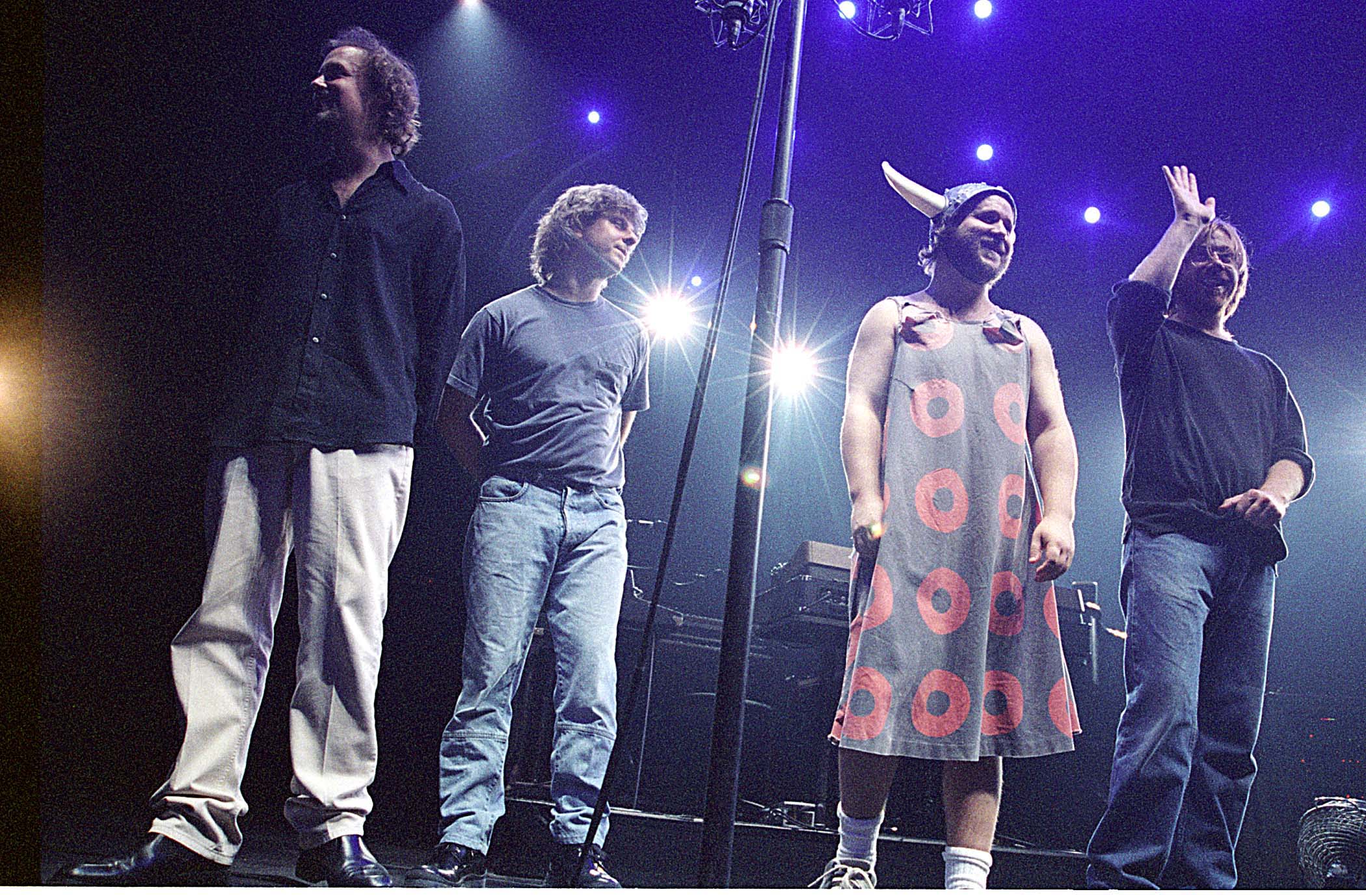Relix 44: Fall ‘98 Phish

photo by Jeff Kravitz
Welcome to the Relix 44. To commemorate the past 44 years of our existence, we’ve created a list of people, places and things that inspire us today, appearing in our September 2018 issue and rolling out on Relix.com throughout this fall. See all the articles posted so far here.
Closing in on the Earth: Fall ‘98 Phish
When Mike Gordon put together a discography for his website a number of years ago, he only listed one Phish LP: The Story of the Ghost. He was kidding around, of course, but he was also saying something about why that particular studio album always felt so special: Released shortly before Halloween 1998 and built from a series of full-on group jams, Ghost captures Phish at their most egalitarian and collaborative.
The four musicians had written together before—most recently, a series of fun songs about their friends and a studio-experiment known as the “The Blob” that was largely shelved in favor of what became their crossover Billy Breathes—but the Ghost sessions were Phish’s first real attempt to slip away from their rapidly rising popularity and simply create. The Vermont Quartet holed up at Bearsville Studios outside Woodstock, and like Dylan and The Band before them, lost themselves in the ether, birthing future live chestnuts like “Birds of a Feather” and “The Moma Dance,” quirky favorites such as “Roggae” and “Meat,” and a number of deep-album cuts spiced with poetry entries from longtime lyricist Tom Marshall’s The Salamander Prince musings. Those numbers, as well the Trey Anastasio/Marshall tunes that filled out the collection, documented the new, Talking Heads-influenced grooves that pushed Phish away from their early classic-rock heroes and jazz- indebted sound, and toward the Cow Funk style they adopted in late 1997.
Yet, by the time Ghost hit stores—accompanied by what was at the time a big media blitz for
the band—their sound had already started to take on a darker, more ambient hue that nodded to their deep dives into the work of Brian Eno and Robert Fripp, Anastasio’s love of Pavement and the loose, punky swagger of their 1998 Halloween cover, The Velvet Underground’s Loaded. The boundaries of what type of music could, and should, serve as the launching pad for jamband rock were also rapidly expanding in the post-Grateful Dead world to include elements of acid-jazz, electronica, funk, indie-rock and the post-rock textures and instrumental vignettes that would eventually surface as Ghost’s counterpart, The Siket Disc.
There were some stormy times ahead, but Phish was still clearly having fun throughout the fall of 1998, whether it was a pair of acoustic sets at the Bridge School Benefit Concert, garage-rock jams with Neil Young at Farm Aid, a surprise “you snooze, you lose” recreation of The Dark Side of the Moon in Utah, the cover- and antic-filled shows that would comprise Hampton Comes Alive, some “Mirror in the Bathroom” segues in Worcester, Mass., or their now-cherished take on Prince’s “1999” at Madison Square Garden.
Marshall recently described Phish’s iconic New Year’s ‘99-‘00 Big Cypress festival and last summer’s Baker’s Dozen run as “twin peaks” hovering over the band’s mountain range of accomplishments. In certain ways, Phish left base camp for their ascent after ‘98, utilizing their Barn oasis more and more, shifting the onstage configuration that they had kept the same since their club days, ushering in a new wave of songs road-tested with their side-projects and achieving a cultural prominence appropriate for a defining band of their generation.
Twenty years removed, the closeness of those recordings, enhanced by Andy Wallace’s expert mix, feels that much more intimate, especially on Ghost’s short, sweet coda “End of Session,” which the band finally played live during the Baker’s Dozen “Jam night” in 2017.
“The Story of the Ghost recording was such a great hang; we jammed for days together trying to get that loose feel,” Anastasio says. “‘End of Session’ felt like the perfect ending to the album, summing up the feeling of closing in on the earth again after being in flight for weeks. We were all completely floored when the Boredoms covered it but, for some reason, it took us till the Baker’s Dozen to try playing it ourselves.”
This article originally appears in the September 2018 issue of Relix. For more features, interview, album reviews and more, subscribe here.



















